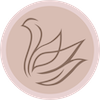Stretch marks, also known as striae, are long, narrow streaks, stripes, or lines that are developed on the surface of the skin. They can be pink, red, purple, or brown and can appear anywhere, with more incidence on the stomach, breasts, thighs, buttocks and upper arms.1 The likelihood of developing them varies according to skin type, age, heredity, diet and the hydration of the skin.
During pregnancy, stretch marks affect between 50 to 90% of the women.
Stretch marks result, as indicated by the name, from stretching of the elastic supportive tissue that lies under the skin. When the expanding and contracting movements are too fast derived for instance from a rapid change in weight (gain and loss) or associated with endogenous or exogenous corticosteroids, skin is not able to adapt and develops a scar.
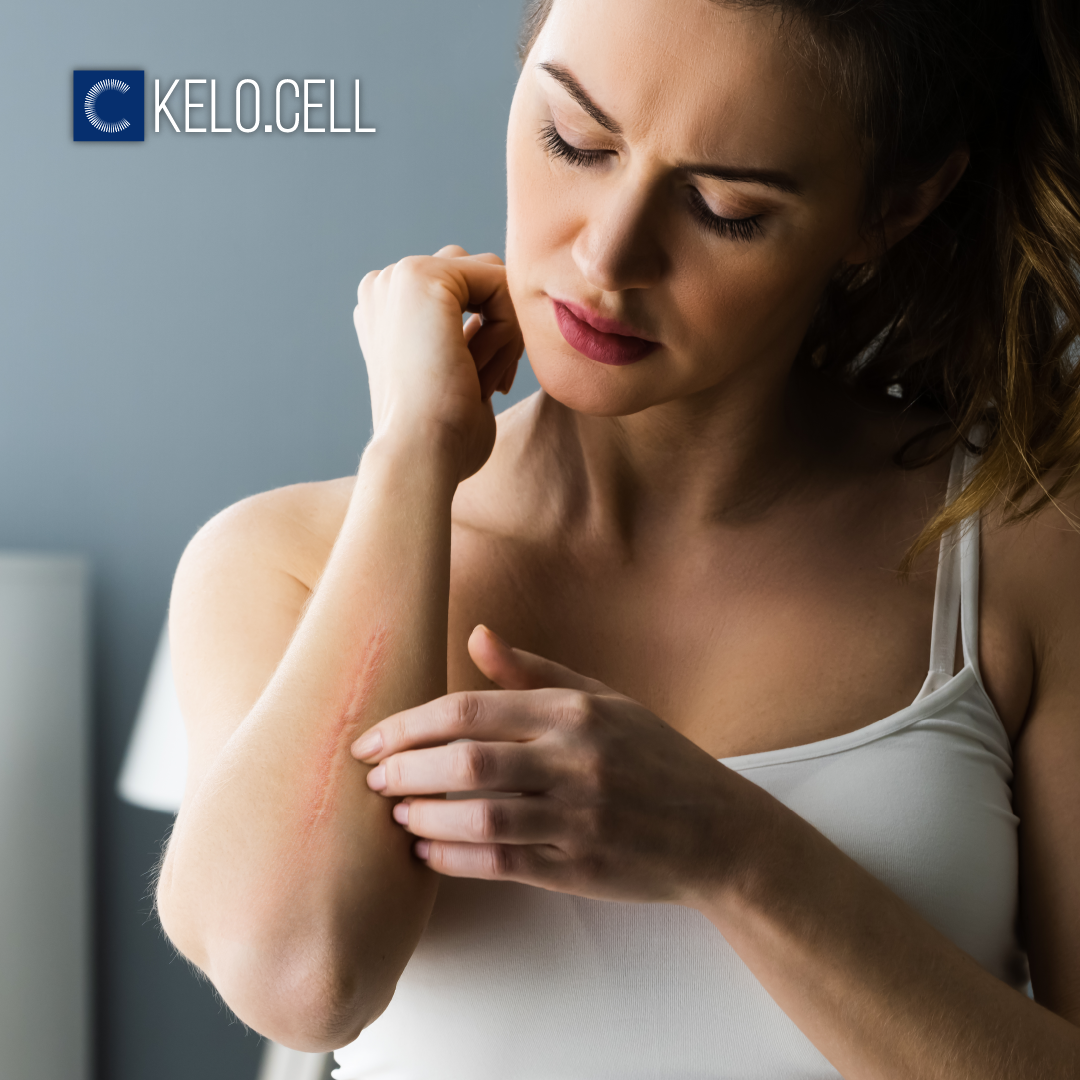
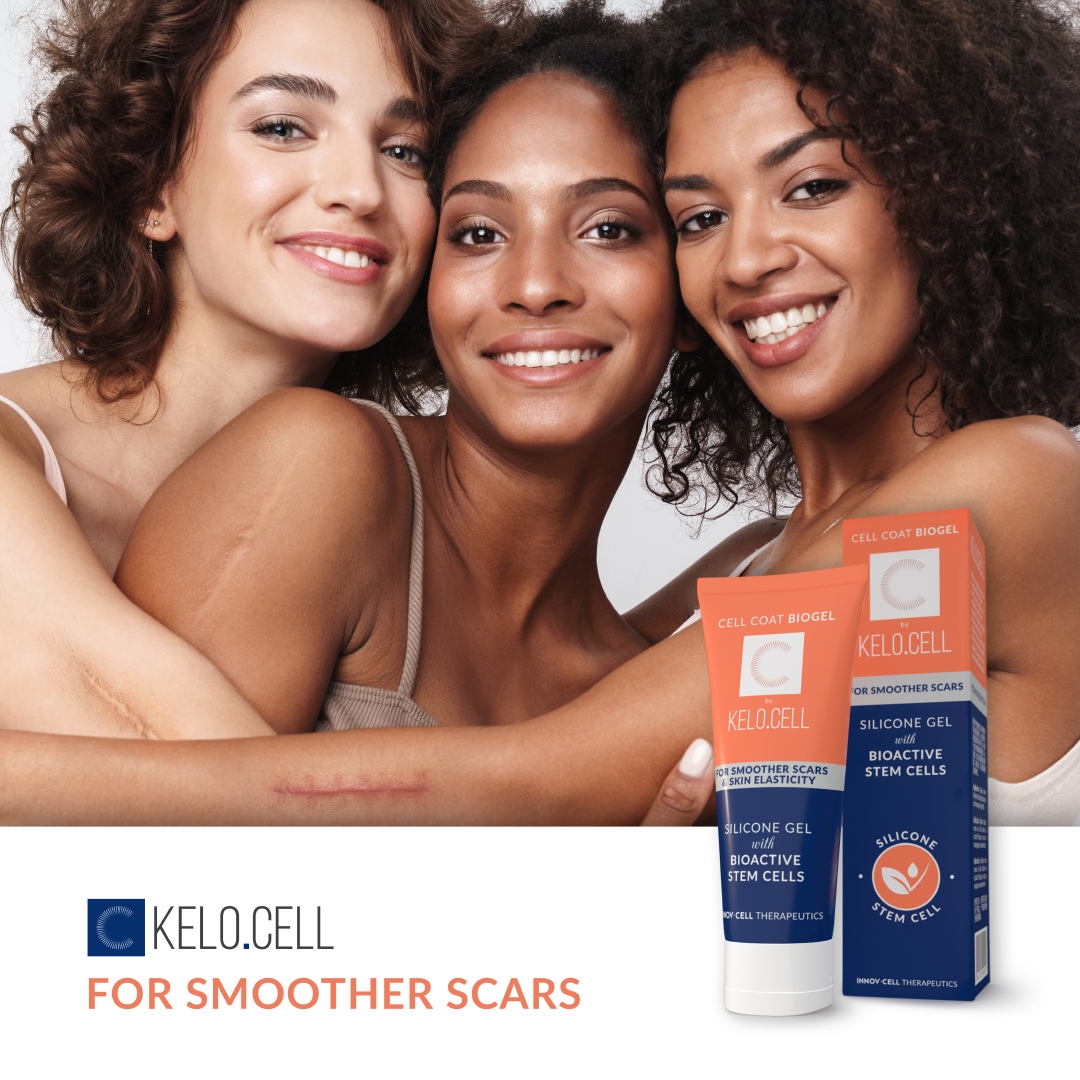
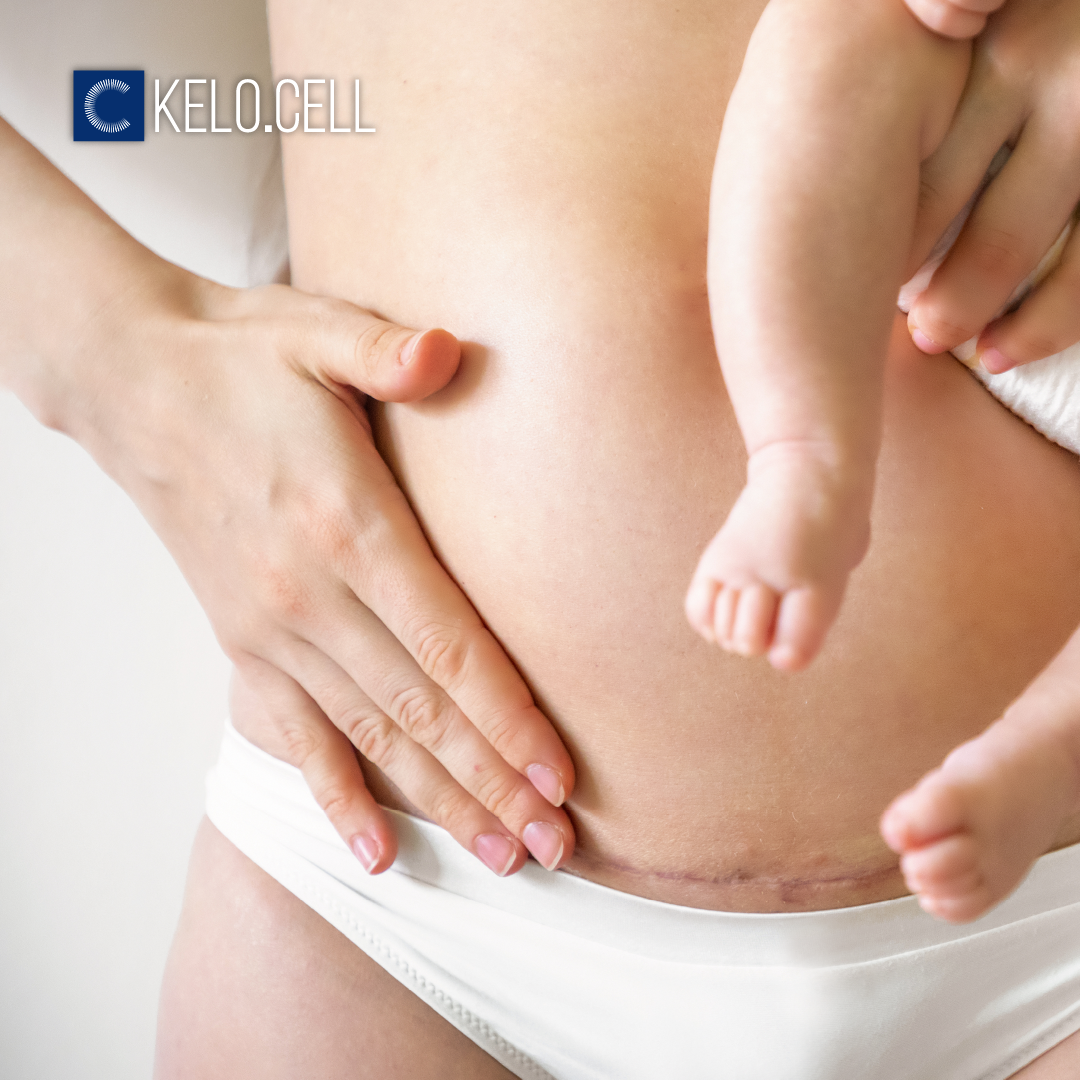
While no product can guarantee to prevent the formation of stretch marks, ensuring that the skin maintains its maximum elasticity is the best defense. This can be achieved by keeping the skin well-hydrated and supple at all times. Like any scar, stretch marks are permanent, but the proper treatment may make them less noticeable. The available treatments reduce redness, swelling and irritation in stretch marks, increase collagen and elastic fiber production, improve hydration, and reduce inflammation. Topical management in form of emollient and moisturizer is commonly recommended to prevent and treat striae, nevertheless little evidence exist on the effectiveness of these products. Newer lasers and radiofrequency treatments hold promise as they do try to modify the vascularity and increase collagen and elastin production.
Kelo.Cell Biogel can be your ally to face stretch marks. The silicone polymers prevent skin dryness and the loss of skin elasticity while the bioactive stem cell compounds enhance hydration and decrease inflammation. And the earlier you start, the better the result!
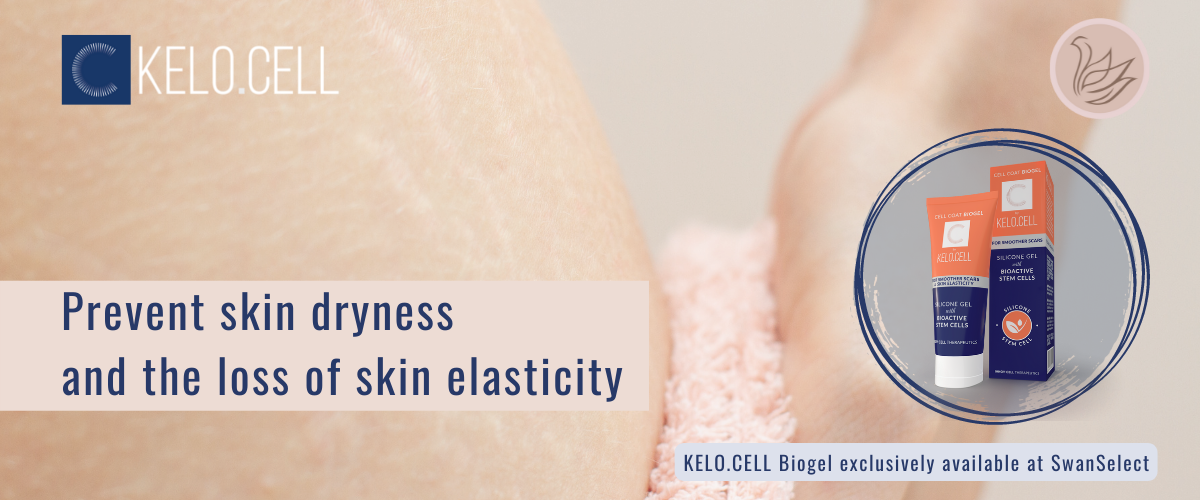
Discover Kelo.cell Biogel in special member price discount at SwanSelect.com
Remark: SwanSelect is only exclusive to the version in original European packaging.
References:
1. Oakley AM, Patel BC. Stretch Marks. StatPearls, https://www.ncbi.nlm.nih.gov/books/NBK436005/ (2021, accessed 8 March 2022).
2. Wollina U, Goldman A. Management of stretch marks (with a focus on striae rubrae). J Cutan Aesthet Surg 2017; 10: 124.
3. Kasielska-Trojan A, Sobczak M, Antoszewski B. Risk factors of striae gravidarum. Int J Cosmet Sci 2015; 37: 236–240.
4. Ersoy E, Ersoy AO, Yasar Celik E, et al. Is it possible to prevent striae gravidarum? J Chinese Med Assoc 2016; 79: 272–275.
5. Brennan M, Clarke M, Devane D. The use of anti stretch marks’ products by women in pregnancy: a descriptive, cross-sectional survey. BMC Pregnancy Childbirth; 16. Epub ahead of print 21 September 2016. DOI: 10.1186/S12884-016-1075-9.
6. Ud-Din S, McAnelly SL, Bowring A, et al. A double-blind controlled clinical trial assessing the effect of topical gels on striae distensae (stretch marks): a non-invasive imaging, morphological and immunohistochemical study. Arch Dermatological Res 2013 3057 2013; 305: 603–617.
7. Hague A, Bayat A. Therapeutic targets in the management of striae distensae: A systematic review. J Am Acad Dermatol 2017; 77: 559-568.e18.
Source: kelocell.com


